Jac Romme
Phase-based Ranging in Narrowband Systems with Missing/Interfered Tones
Nov 01, 2022

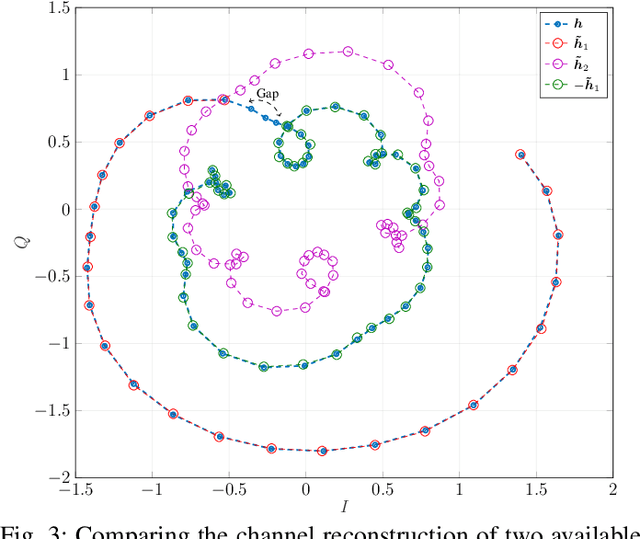
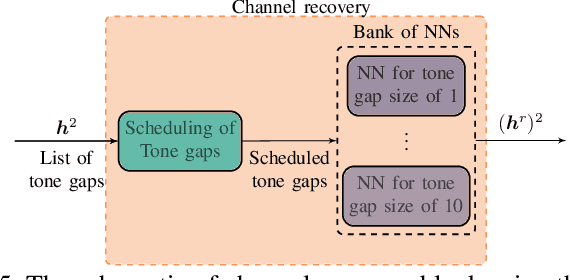
Abstract:The growth in the number of low-cost narrow band radios such as Bluetooth low energy (BLE) enabled applications such as asset tracking, human behavior monitoring, and keyless entry. The accurate range estimation is a must in such applications. Phase-based ranging has recently gained momentum due to its high accuracy in multipath environment compared to traditional schemes such as ranging based on received signal strength. The phase-based ranging requires tone exchange on multiple frequencies on a uniformly sampled frequency grid. Such tone exchange may not be possible due to some missing tones, e.g., reserved advertisement channels. Furthermore, the IQ values at a given tone may be distorted by interference. In this paper, we proposed two phase-based ranging schemes which deal with the missing/interfered tones. We compare the performance and complexity of the proposed schemes using simulations, complexity analysis, and two measurement setups. In particular, we show that for small number of missing/interfered tones, the proposed system based on employing a trained neural network (NN) performs very close to a reference ranging system where there is no missing/interference tones. Interestingly, this high performance is at the cost of negligible additional computational complexity and up to 60.5 Kbytes of additional required memory compared to the reference system, making it an attractive solution for ranging using hardware-limited radios such as BLE.
Delay Estimation for Ranging and Localization Using Multiband Channel State Information
Nov 20, 2021
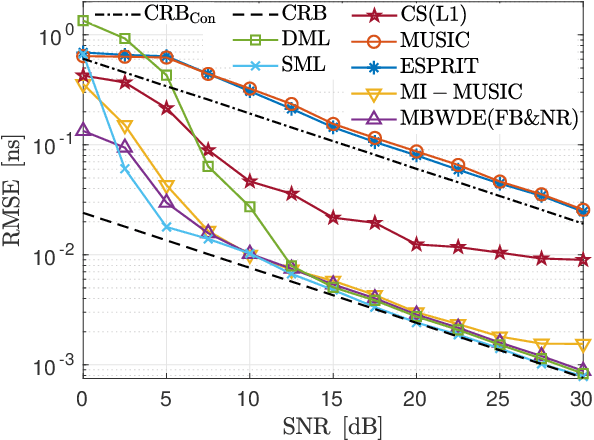
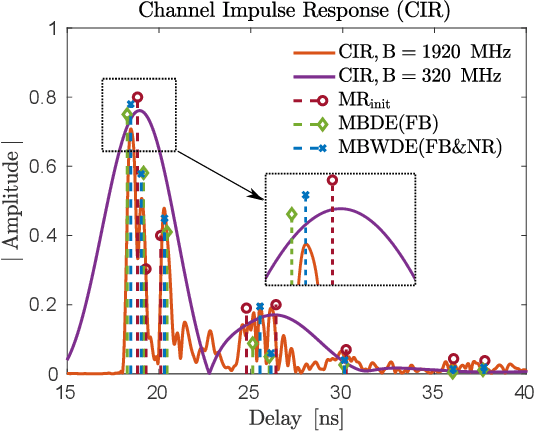
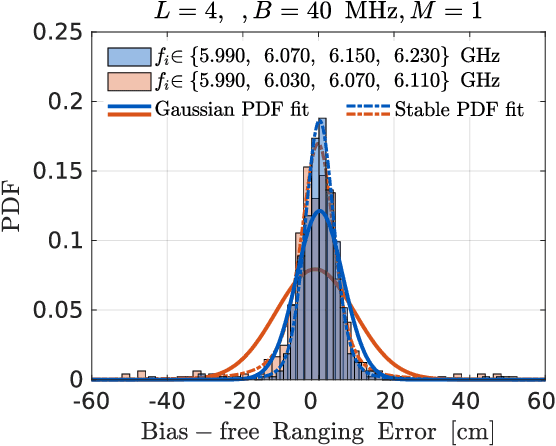
Abstract:In wireless networks, an essential step for precise range-based localization is the high-resolution estimation of multipath channel delays. The resolution of traditional delay estimation algorithms is inversely proportional to the bandwidth of the training signals used for channel probing. Considering that typical training signals have limited bandwidth, delay estimation using these algorithms often leads to poor localization performance. To mitigate these constraints, we exploit the multiband and carrier frequency switching capabilities of wireless transceivers and propose to acquire channel state information (CSI) in multiple bands spread over a large frequency aperture. The data model of the acquired measurements has a multiple shift-invariance structure, and we use this property to develop a high-resolution delay estimation algorithm. We derive the Cram\'er-Rao Bound (CRB) for the data model and perform numerical simulations of the algorithm using system parameters of the emerging IEEE 802.11be standard. Simulations show that the algorithm is asymptotically efficient and converges to the CRB. To validate modeling assumptions, we test the algorithm using channel measurements acquired in real indoor scenarios. From these results, it is seen that delays (ranges) estimated from multiband CSI with a total bandwidth of 320 MHz show an average RMSE of less than 0.3 ns (10 cm) in 90% of the cases.
* 16 pages, 17 figures, 2 tables, journal
Multi-Static UWB Radar-based Passive Human Tracking Using COTS Devices
Sep 27, 2021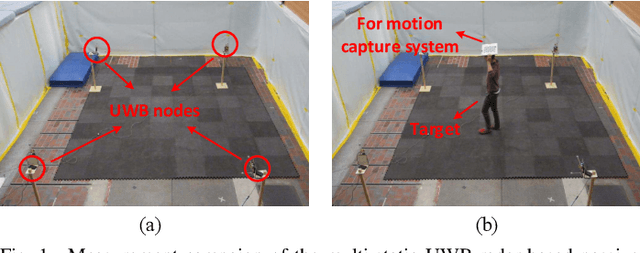
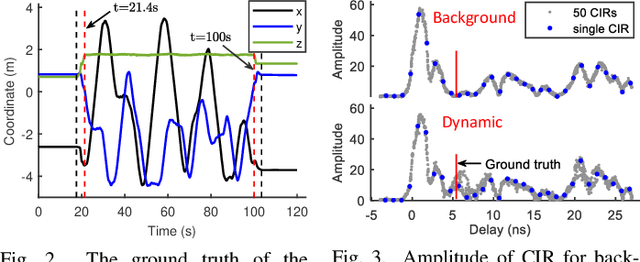
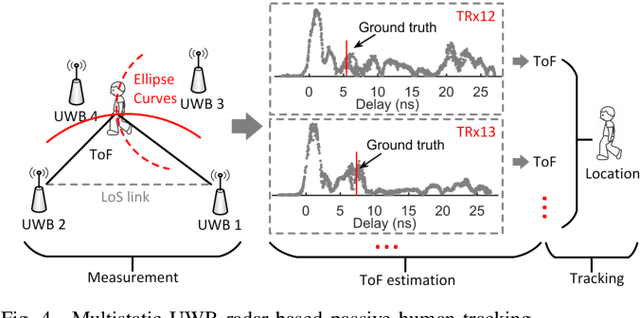
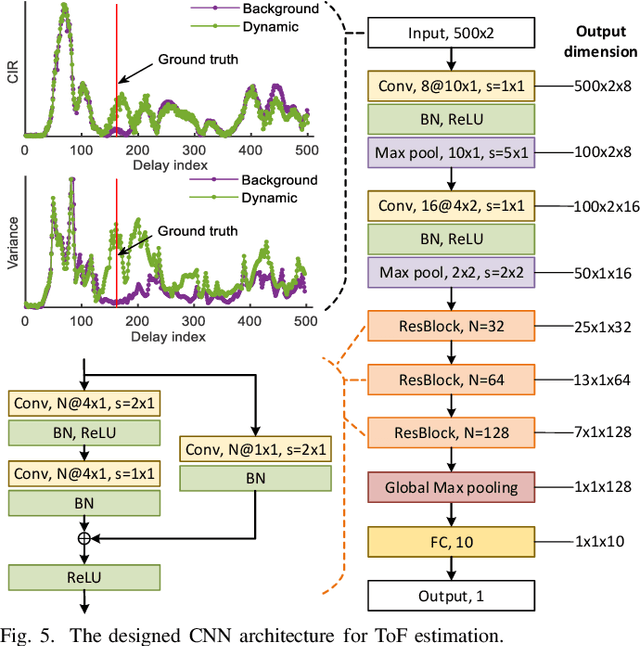
Abstract:Due to its high delay resolution, the ultra-wideband (UWB) technique has been widely adopted for fine-grained indoor localization. Instead of active positioning, multi-static UWB radar-based passive human tracking is explored using commercial off-the-shelf (COTS) devices. To extract the time-of-flight (ToF) reflected by the moving person, channel impulse responses (CIR) and the corresponding variances are used to train the convolutional neural networks (CNN) model. Particle filter algorithm is adopted to track the moving person based on the extracted ToFs of all pairs of links. Experimental results show that the proposed CIR- and variance-based CNN models achieve 30.12-cm and 29.04-cm root-mean-square errors (RMSEs), respectively. Especially, the variance-based CNN model is robust to the scenario changing and promising for practical applications.
 Add to Chrome
Add to Chrome Add to Firefox
Add to Firefox Add to Edge
Add to Edge